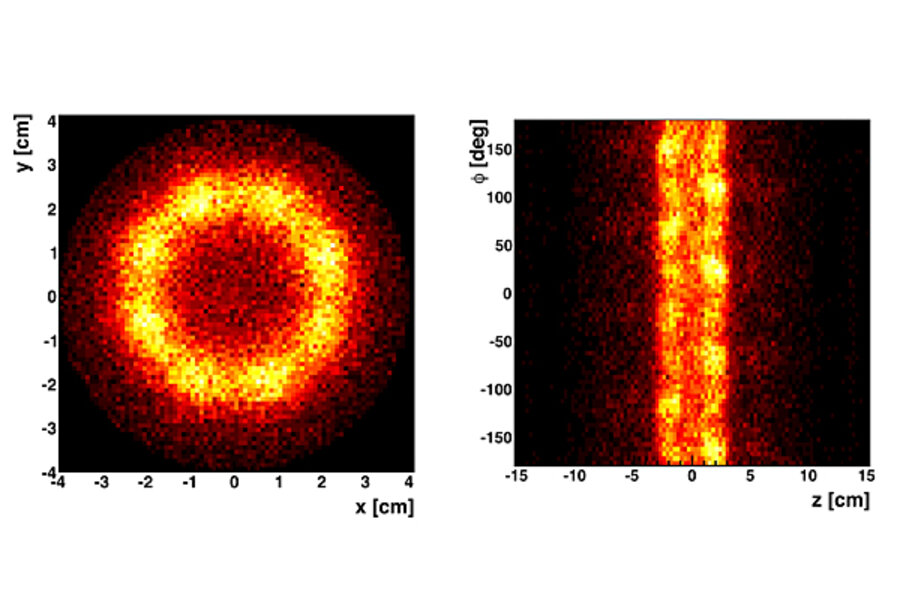Antimatter breakthrough could help scientists unravel Big Bang mystery
Loading...
In a feat akin to capturing lightning in a bottle, physicists have created and for the first time briefly captured antihydrogen, the antimatter counterpart to the simple hydrogen atom.
For more than 20 years, physicists have been looking for ways to create and study antihydrogen as a way to gain insights into processes that allowed the universe to evolve from a hot, roiling soup of subatomic particles shortly after the Big Bang some 13.6 billion years ago into the cooler collection of planets, stars, and galaxies astronomers observe today.
The experiments yielding the result represent an important step toward designing tools that will create and maintain large numbers of these antimatter atoms long enough for scientists to study them in detail.
"Being able to study these particles brings us closer to understanding the composition of antimatter and the physical properties of our universe," says Paul Nolan, a physicist at the University of Liverpool in Britain and a member of the team reporting the results in Thursday's issue of the journal Nature.
The experiments were conducted at CERN, the European Organization for Nuclear Research, located outside Geneva along the Swiss-French border.
What is antimatter?
Like a hydrogen atom, which consists of an electron orbiting a single proton, antihydrogen is made up of two particles – a positron and an antiprotons, the antimatter counterparts to electrons and protons.
The particles are virtually identical in every way, except for two properties, one of which is their electrical charge. An electron carries a negative electrical charge, while the positron carries a positive charge. A proton carries a positive charge, while an antiproton carries a negative charge.
Positrons and antiprotons form in a range of processes in the cosmos. For instance, positrons form as a byproduct of collisions between cosmic rays and matter in clouds of dust and gas between stars.
But they trend to vanish quickly; when matter and antimatter meet, they annihilate each other in a sudden release of energy.
The Big Bang mystery
This has posed a cosmological conundrum. Current theories hold that when the universe was in its infancy, conditions at the time should have generated matter and antimatter in equal amounts. The inability of matter and antimatter to survive each other should have led to a universe with only a bit of each left as the universe expanded. Yet today's universe holds far more matter than antimatter.
"For reasons no one yet understands, nature ruled out antimatter," says Jeffery Hangst, a physicist at Denmark's Aarhus University as well as a member of the research team for the ongoing project, known by its acronym ALPHA.
In studying antihydrogen in the lab and comparing it with the heavily studied hydrogen atom, physicists hope to pin down the reasons for today's matter-antimatter mismatch.
And there are other burning questions. For instance, does gravity affect hydrogen and antihydrogen in the same way? Or might there be some bizarre difference in behavior between the two?
How scientists did it
Physicists produced the first antihydrogen atoms in 2002, and since then have devised ways to produce them in ever larger quantities. But sustaining antihydrogen long enough for instruments to probe it has proven difficult.
The ALPHA team managed the feat by gathering some 700 million positrons and roughly 10 million antiprotons into tiny clouds, each just under 1 millimeter across. They brought these fly-speck patches of antimatter together, trapping them in a complex set of magnetic fields.
Out of that mix, the team created 38 antihydrogen atoms, which hung around for bout 0.2 seconds before they were released from the magnetic trap and vanished in annihilation events. Detectors along ALPHA's apparatus spotted subatomic particles generated by the annihilation events.
The ALPHA team's results represent "an encouraging step" toward the the goal of conducting detailed studies of antihydrogen, says Harvard University's Gerard Gabrielse, another physicist at CERN working on a different set of antihydrogen experiments. He first proposed the idea in 1987, but one that met with skepticism; few at the time thought antihydrogen could be created and corralled.
The challenge now, researchers say, is to increase the number and survival time of the antihydrogen atoms, as well as design antihydrogen traps that will allow researchers to use lasers to excite the antiatoms and see how they react. Then, they can see how closely they match the behavior of similarly tickled hydrogen.





